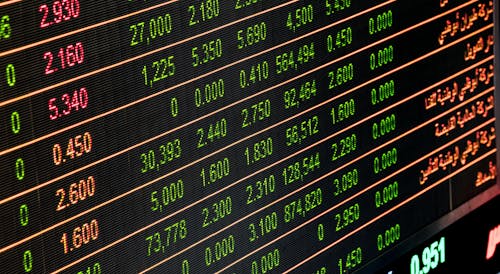Is There A Good Chance That A Rally Has Begun?

Image Source: Pexels
I apologize that I haven't posted for a couple weeks. I had to take some time away, but now I'm ready to jump back in.
I've shown the standard chart of the PMO index below, but I've removed the labels showing the beginning of the short-term cycle trends because the index has been so choppy that the short-term cycles have been unclear. The last clear short-term trend was the rally that started in the middle of May.
The core of my trading strategy is to take advantage of the short-term cycles, so this choppy period showing up in the PMO index with unclear short-term trends has made trading difficult. But there are other important features to my trading, such as cutting losses quickly, that have helped quite a bit.
I will confess, though, that I didn't cut losses aggressively in the late September period, and I paid a price for it. It served as a reminder that consistency and discipline are key to successful trading.
Friday's market was very strong after a long period of intense selling, so there is a good chance that the market has washed out the excessive bullishness and that a rally has begun. I would love to see a strong uptrend like the one witnessed from the mid-March to mid-April period, but, unfortunately, I'm going to have to assume that the market will continue to be choppy.
The chart below shows the major indexes popping up above their five-day averages, which is the first requirement of a new short-term uptrend. However, before declaring a new uptrend, it needs to be confirmed by other key market trend indicators.
The bullish percents of the two major exchanges are a couple of my favorite market trend indicators, and they haven't turned upwards and above their five-day averages, although they are at fairly low levels. When the bullish percents are down to this point, this is when you have to start thinking as a contrarian, and you must look for signs that the selling is exhausted and that a rally might soon begin.
In other words, I think this chart indicates the conditions are right for a rally to begin.
I've mentioned before that the momentum indicator of the NYSE common-stock-only advance/decline line is a good market timing tool. The smooth lines and the distinct cross-overs give really nice buy/sell signals, so I've placed this indicator in the lower panel of the chart to show how it can filter out the noise of the choppy PMO index.
Looking at this chart today is a reminder to myself of how important it is to trust my own indicators, because if I had been trusting this chart, it would have had me in cash after the sell signal in mid-September. Both of the indicators in this chart said to sell.
As you can see, similar to the chart of the bullish percents above, there is no buy signal showing up yet in either panel, so if a rally has begun, we have to consider the rally as unconfirmed for now. I really like this chart.
The selling in the stock market finally impacted this junk bond ETF in late September. When the price broke below the uptrend it was an important market signal towards caution, but I also have to say that it doesn't look too bad yet, and it may just be that the ETF is ready to trade sideways to consolidate gains.
A healthy stock market does not have a lot of new 52-week lows and, obviously, this chart is showing a of new lows, indicating that there is a problem. I don't think there is any question about it -- this isn't a healthy market.
However, the spike in new lows occurred, for the most part, during the short-term cycle lows of September and early October, which is the weakest time of the year, and also when yields and oil prices were rising sharply.
Now what? The weakest seasonal period is transitioning to the strongest seasonal period of the year, and oil prices have pulled back very sharply. For the market to rally, I think yields need to have at least topped out in the short-term, and that seems likely to me after such a strong run higher.
I think it is more important to see how the new-lows indicator behaves in the coming months than it is to look back over these past few months. In other words, to get bullish toward stocks, we need to see the number of new lows fall dramatically down to harmless levels.
So, where does this leave me? In the short-term, the market looks like it wants to rally, but I need to see confirmation early next week. For now, I'm comfortable with being about 25% invested in stocks, and I will deploy additional cash into stocks as the indicators that I follow improve.
The following chart shows the 10-year and 30-year yields breaking to new highs in early August. Therefore, it is obvious to say (and considerably late to say) that yields are trending higher, while bond prices are trending lower.
The ECRI Index continues to point higher and is well above the zero level, and I believe this points to economic growth which favors stock prices longer-term.
Outlook Summary
- The short-term trend is uncertain for stock prices.
- The ECRI Weekly Leading Index points to economic recovery as of July 2023.
- The medium-term trend is down for Treasury bond prices as of August 2023 (yields up, prices down).
More By This Author:
Too Soon For An Uptrend?
The Short-Term Downtrend Flipped Up
Soon To See Signs Of The Short-Term Uptrend
Best Minds, Inc is a registered investment advisor that looks to the best minds in the world of finance and economics to seek a direction for our clients. To be a true advocate to our clients, we ...
more










